I am trying to understand why my subview is not receiving touches.
Below is a gif showing the behavior I am encountering: when I click the cyan button on the right, nothing happens (the background of the view on the left is supposed to change color). When I click the green button on the left, it correctly receives the touch event, the attached TouchDown action fires and the color of the view changes.
This "app" is obviously not a real app and is just meant to illustrate the behavior I'm encountering. Really what I'm after is learning how to implement the common "slide out menu" pattern that you see in many apps; usually with an accompanying hamburger button.
In many of these apps, it looks like the main application content is moved aside to reveal the menu, "hiding" underneath the app, as it were. I am trying to replicate that same behavior here.
I am pasting my ViewController code in here. The code you see below is everything I have.
import UIKit
class ViewController: UIViewController {
var originalX : CGFloat!
var originalY : CGFloat!
var containerView = UIView()
var button : UIButton!
var button2 : UIButton!
override func viewDidLoad() {
super.viewDidLoad()
originalX = self.view.frame.origin.x
originalY = self.view.frame.origin.y
button = UIButton(frame: CGRectMake(200, 25, 100, 100))
button.backgroundColor = UIColor.greenColor()
button.addTarget(self, action: "foo", forControlEvents: .TouchDown)
view.addSubview(button)
containerView.frame = CGRectMake(self.view.frame.width, originalY, 150, self.view.frame.height)
containerView.userInteractionEnabled = true
containerView.backgroundColor = UIColor.magentaColor()
containerView.clipsToBounds = false
button2 = UIButton(frame: CGRectMake(25, 25, 100, 100))
button2.backgroundColor = UIColor.cyanColor()
button2.addTarget(self, action: "bar", forControlEvents: .TouchDown)
view.addSubview(containerView)
containerView.addSubview(button2)
}
@IBAction func left() {
UIView.animateWithDuration(0.3) {
self.view.frame = CGRectMake(self.originalX - 150, self.originalY, self.view.frame.width, self.view.frame.height)
}
}
@IBAction func right() {
UIView.animateWithDuration(0.3) {
self.view.frame = CGRectMake(self.originalX, self.originalY, self.view.frame.width, self.view.frame.height)
}
}
func foo() {
UIView.animateWithDuration(1.0) {
self.view.backgroundColor = UIColor.redColor()
}
}
func bar() {
UIView.animateWithDuration(1.0) {
self.view.backgroundColor = UIColor.blueColor()
}
}
}
